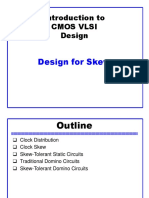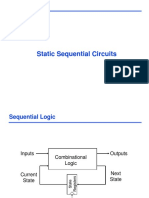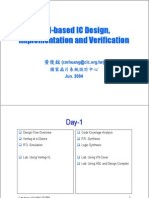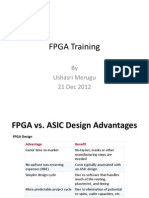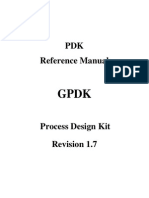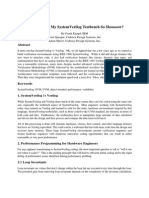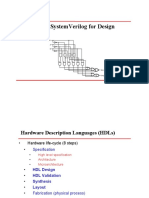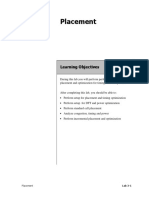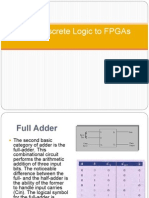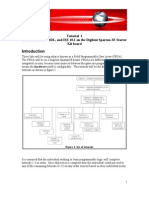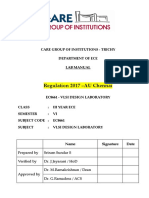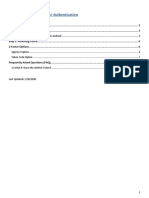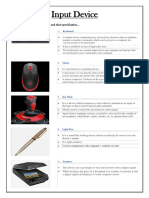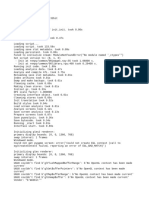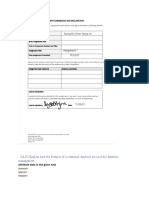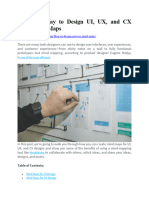0% found this document useful (0 votes)
363 views64 pagesLec01 Verilog Combinational Circuits Design 2022 Spring
This document provides an introduction and overview of integrated circuit design and combinational circuits. It outlines the topics that will be covered, including design flow, Verilog, behavioral models of combinational circuits, and simulations. The design flow involves developing specifications, writing RTL code, synthesis, physical design with placement and routing, layout, and fabrication. Hardware acceleration can be achieved through application specific ICs or FPGAs that are specially designed for time-consuming parts of a system.
Uploaded by
yanjia8161100Copyright
© © All Rights Reserved
We take content rights seriously. If you suspect this is your content, claim it here.
Available Formats
Download as PDF, TXT or read online on Scribd
0% found this document useful (0 votes)
363 views64 pagesLec01 Verilog Combinational Circuits Design 2022 Spring
This document provides an introduction and overview of integrated circuit design and combinational circuits. It outlines the topics that will be covered, including design flow, Verilog, behavioral models of combinational circuits, and simulations. The design flow involves developing specifications, writing RTL code, synthesis, physical design with placement and routing, layout, and fabrication. Hardware acceleration can be achieved through application specific ICs or FPGAs that are specially designed for time-consuming parts of a system.
Uploaded by
yanjia8161100Copyright
© © All Rights Reserved
We take content rights seriously. If you suspect this is your content, claim it here.
Available Formats
Download as PDF, TXT or read online on Scribd
/ 64

















